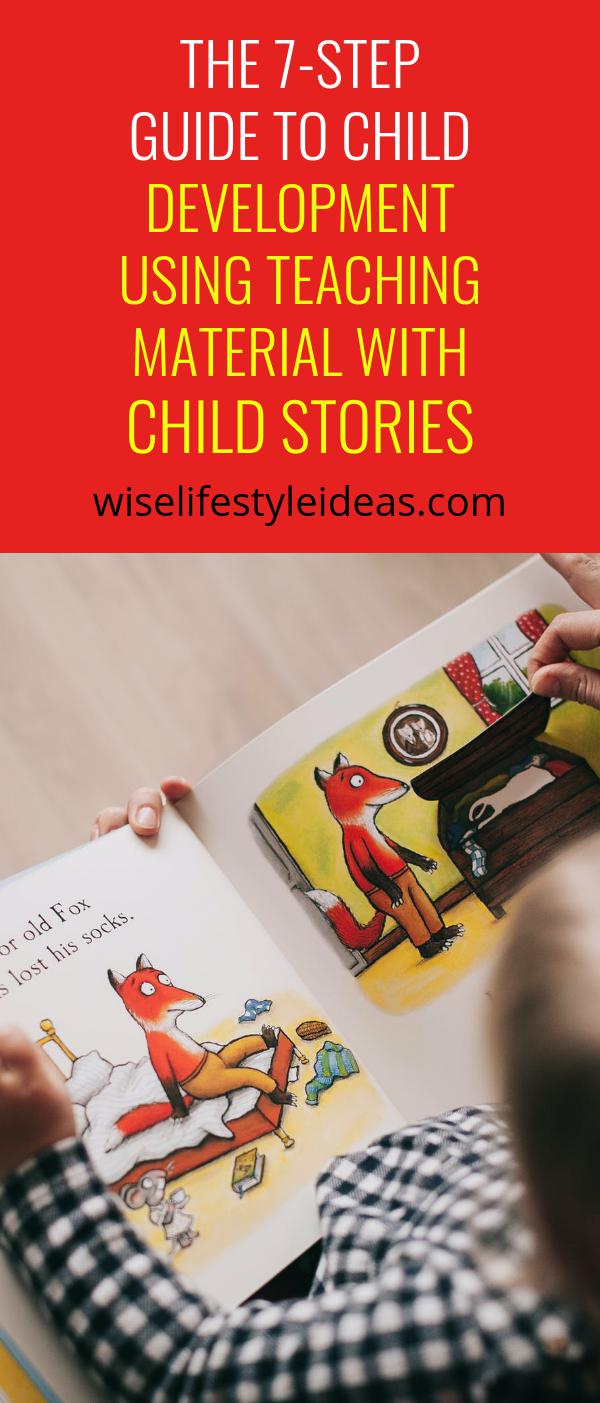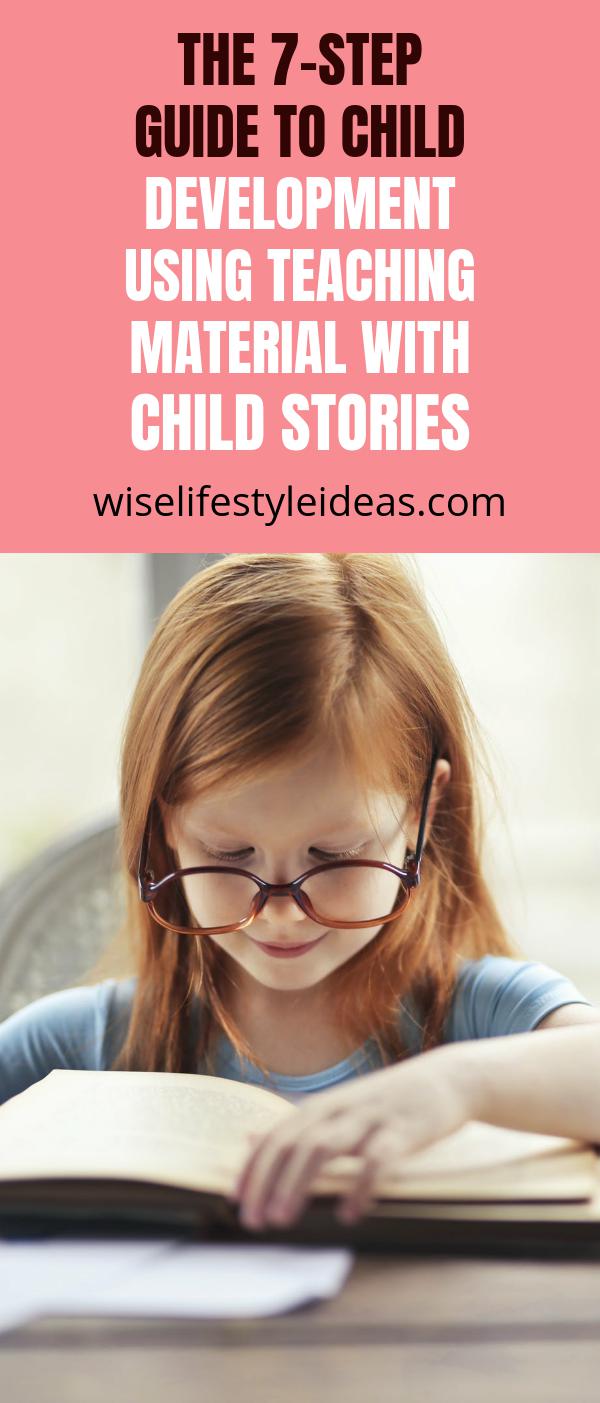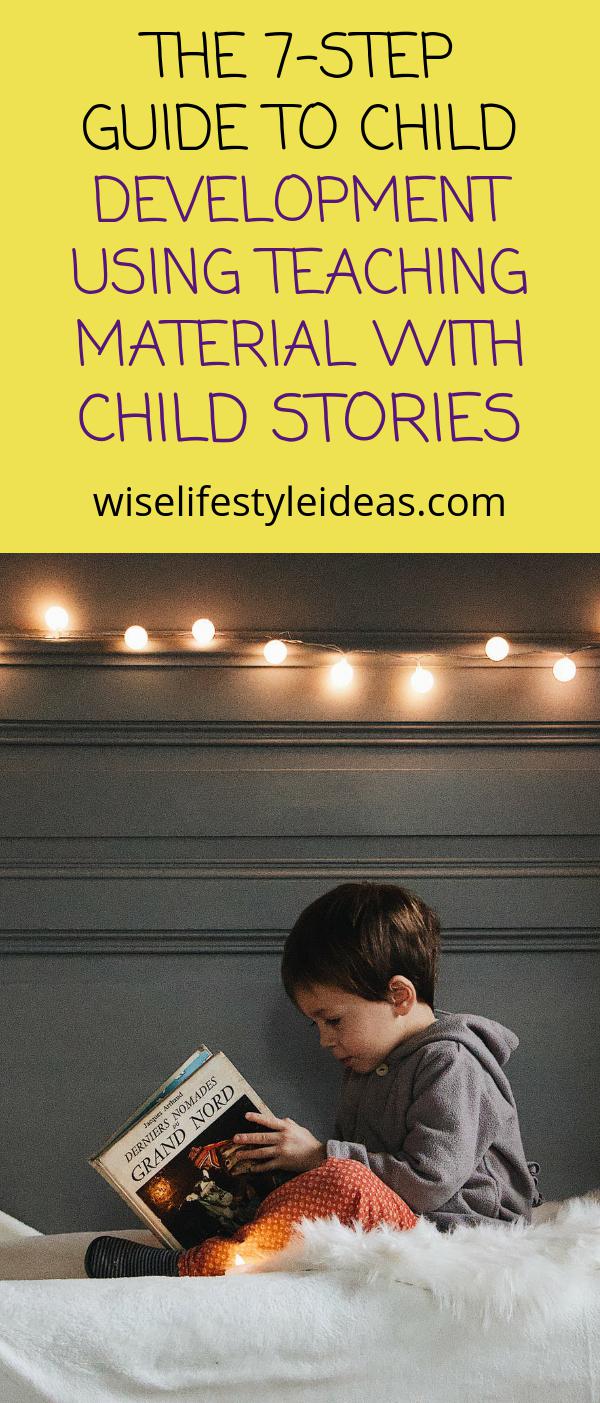Child stories are an excellent way to promote child development. You can use teaching material along with children’s stories to teach moral lessons, factual knowledge, or emotional intelligence.
The beauty of using child stories in this way is that children learn without feeling like they’re “learning”; they learn by osmosis.

Using stories to teach also gets children to really think about things. They can actively get involved in the story rather than just passively listening to it or reading it.
So, how can YOU use stories in this way? When you follow these 7 simple steps, you’ll find that using stories to teach is incredibly easy, and fun, too!
#1 Decide what you want to teach
What do you want your child or students to learn? How do you want them to feel at the end of the “lesson”?
#2 Ask specific questions about events or characters from the story
Questions such as “why did this happen?”, “Why did Santa do that?” or “how do think Billy felt?” are good examples. Try to get children to “analyze” the story – to think about why something happened and its consequences, the motivations, and feelings of characters, etc.
#3 Relate the story to the child’s own life/experiences
This is KEY – by doing so the child will assimilate the lesson(s) of the story. It becomes more real and personal for the child. Ask questions like “how would you feel if” or “do you ever feel like [character]?”
#4 Use props and visual aids
This is particularly useful for teaching factual information (e.g. anatomy), but you can also use it to provide visual cues that help children get into the story (imagine it more easily) and remember it better.
#5 Have them get physical
Besides getting them to think, you can get them to act out the story, perhaps even creating their own version of it. They’ll really feel like the story and its lessons are a part of them. Moreover, when children move their own bodies, the story becomes more real and personal for them. This also helps kinesthetic learners.
#6 Have them relate the story to the larger world
After you get them to relate the story to their own experience, you can really expand a child’s mind by having him or her relate the story to the larger world.
#7 Create a lesson plan

Conclusion
In my experience, “success” and “happiness” are not determined so much by talent and (technical) knowledge (although they are important, too) as they are by character and emotional intelligence. By using child stories to help build character and emotional intelligence, you can put your children or students on the path to lifelong success and happiness.




